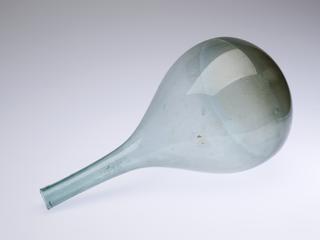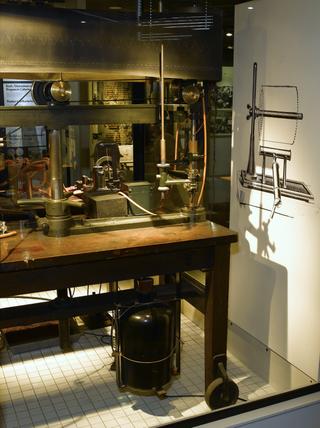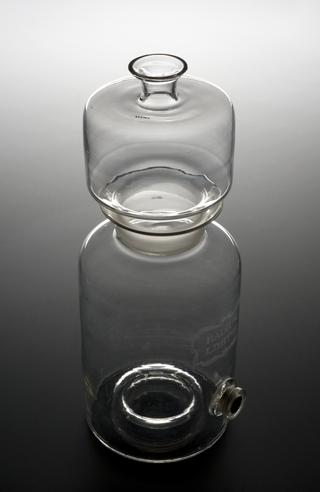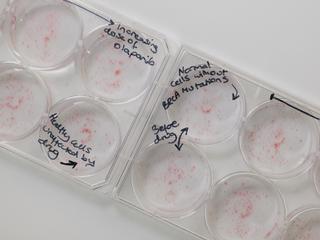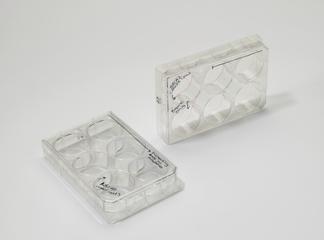




Chemical retort, earthenware, English(?), 1801-1930
Retorts have long been standard pieces of laboratory equipment. They are used during chemical experiments and large-scale processes such as distillation. Normally made of glass, this example is made from earthenware and is a typical shape, with a long stem and a large bowl. Reagents are placed in the bowl and heated from underneath. It is shown with a similar example (A634003).
Details
- Category:
- Laboratory Medicine
- Collection:
- Sir Henry Wellcome's Museum Collection
- Object Number:
- A634351
- Materials:
- earthenware (unglazed)
- Measurements:
-
overall: 450 mm x 340 mm, 230 mm, 3.72kg
- type:
- retort
